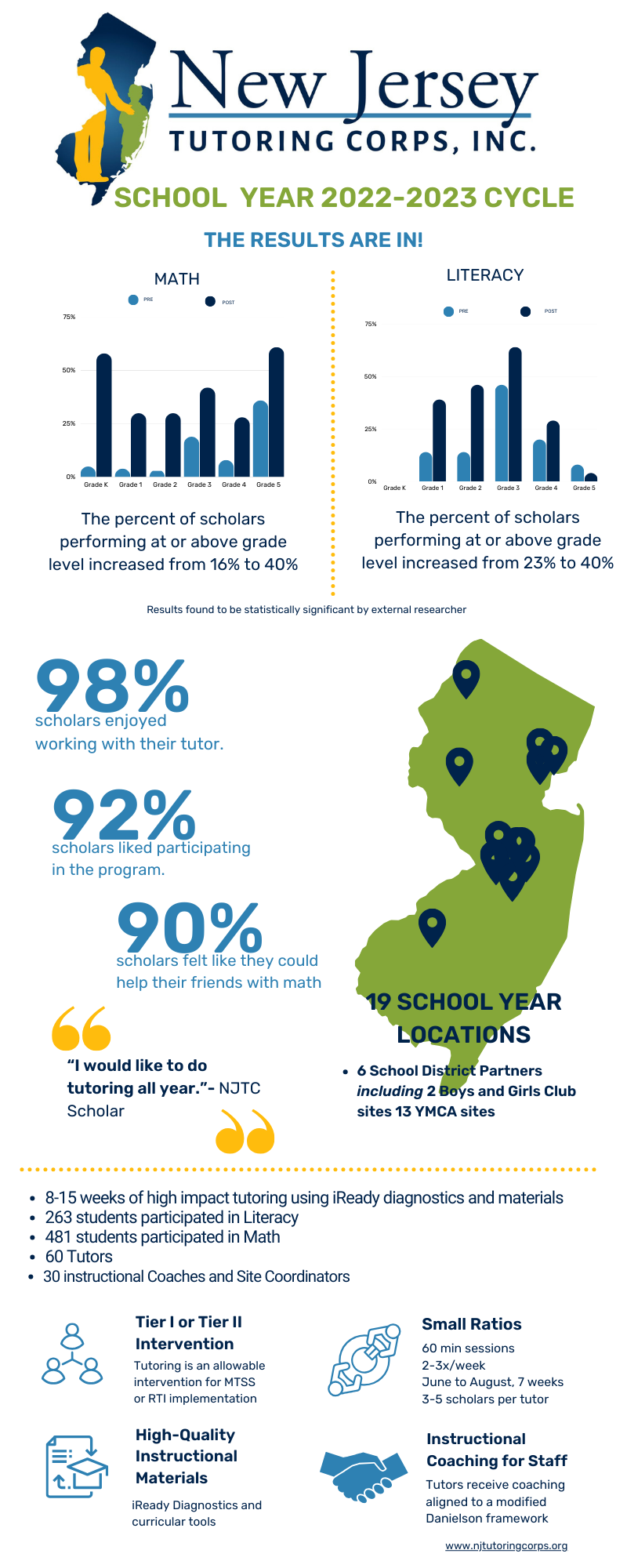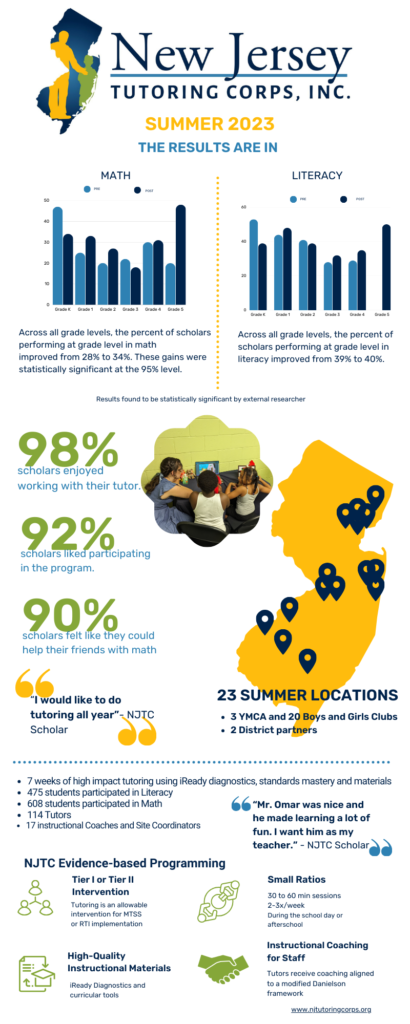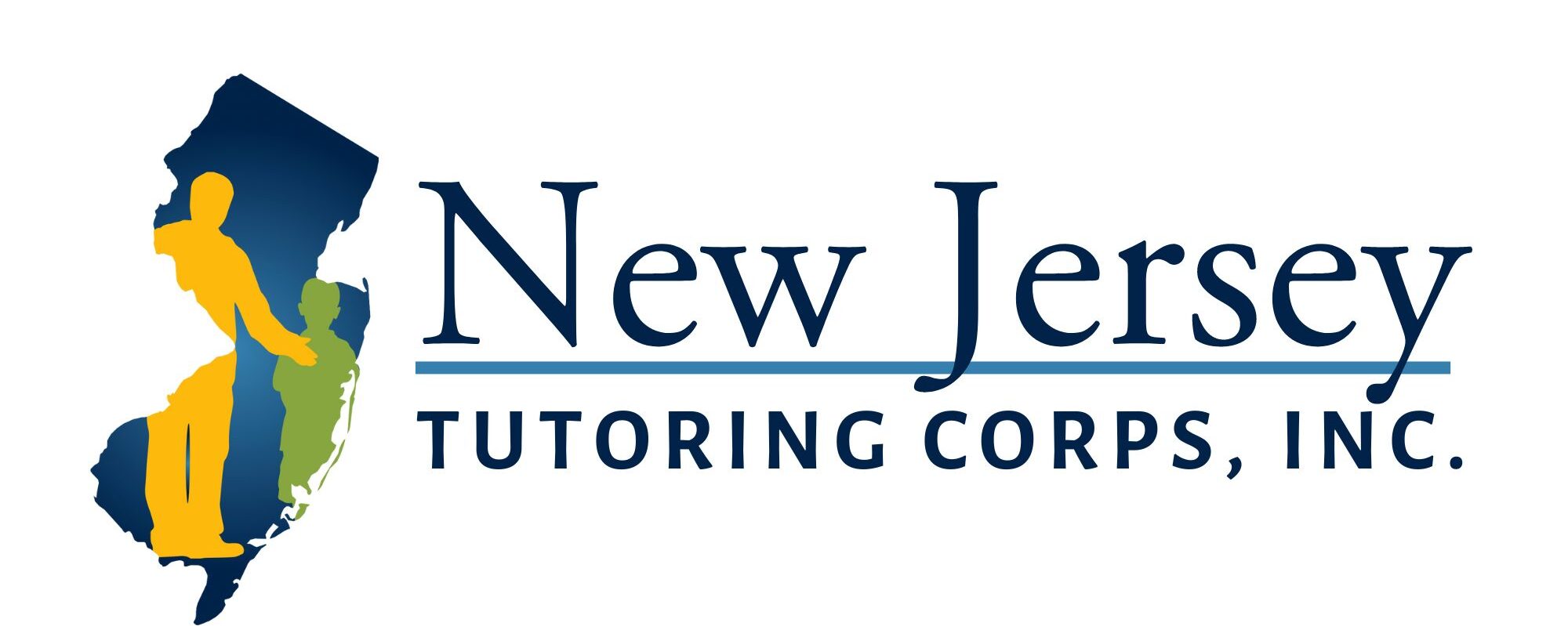Our Program and Evaluation Methods
Our Program
The New Jersey Tutoring Corps provides tutoring services to scholars in grades PreK-8 throughout the state. We began offering services in the summer of 2021, by partnering with Boys and Girls Clubs of NJ and the Y Alliance of NJ, offering tutoring services during an eight-week summer program onsite at clubs or at the schools with which they partner for summer programs.
We have now run three program cycles: summer 2021, school-year 2021/22 with after-school programming, and summer 2022. Currently, we are diversifying to include a school-year embedded school-day model as well as summer and after-school programs.
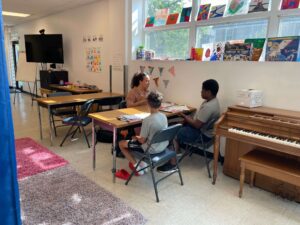
Embedded School-day
We co-design programming with districts to support multi-tiered systems of support (MTSS) as a Tier 1 or Tier 2 intervention embedded during the school-day. Sessions range from 30 – 60 minutes multiple times per week per content area. Scholar ratios are 1:3 and sessions are during intervention blocks or the end of instructional blocks as a center. This model runs in fall and/or spring blocks of 12-15 weeks in length.
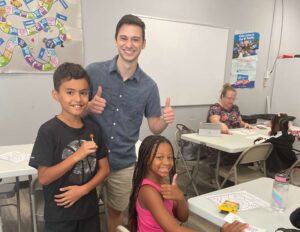
After School Tutoring
We partner with districts and community providers for the after school day model. Sessions range from 30-45 minute blocks also multiple times per week per content area. After school programming is on site at the school to maximize time with scholars. Scholar ratios are 1:3 and this model runs in fall and/or spring blocks of 12-15 weeks in length.
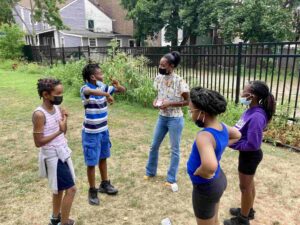
Summer Tutoring
The summer model is for both school district and community partners. Sessions range from 30 – 60 minutes multiple times per week per content area. Scholar ratios are 1:3 and occur on site at the camp or school based program. This is an 8 week program.
For our school-year program, we are looking to partner directly with schools/districts and will still run our summer program in partnership with Boys and Girls and Y Alliance clubs.
Using a high-dosage tutoring model, we work to hold group size to no more than 1:3 tutor to scholar ratio.
Training
Our tutors and field leaders – Site Coordinators and Instructional Coaches – are extensively trained prior to working with scholars. Training typically involves the following components, over a 1-2 week period, with scheduling flexibility.
- Curricular Training in iReady Math and Literacy
- Role Based Training
- Social Justice Skills
- Social and Emotional Learning Skills
- Professionalism
- Asset-Based Mindset
- Giving and Receiving Feedback
- Operational logistics
- Knowtion- professional learning community
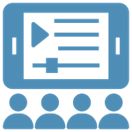
Growing a pipeline of educators and leaders
Our high-dosage tutoring model produces statistically significant results in content knowledge, scholar attitudes towards learning. In addition, it grows the practice of educators, providing teacher leadership experience to those certified educators who choose a leadership role as either a Site Coordinator or Instructional Coach and offers clinical experience to those pursuing teacher certification. .
Evaluation
In addition to our data exports from curricula used in our program, we conduct surveys of all field staff and scholars in grades 3-5. We shared these data points with an external evaluator in the case of our first summer program, and with an external researcher in subsequent programs. Using our data, and data that they collected about our program, external evaluation reports are produced by our research partners. Those reports are linked under each program cycle description below.
Program Evaluation Reports
At the end of each program cycle, we work with an external evaluator or researcher to conduct an independent analysis of program efficacy. Each of our reports – one per program cycle – is linked below. Please access these reports for a full view of our impact data.
Most Recent Program Impact
The infographics below highlight our program findings from our School Year 2022/2023 and Summer 2023 program cycles. The full reports are available above.
